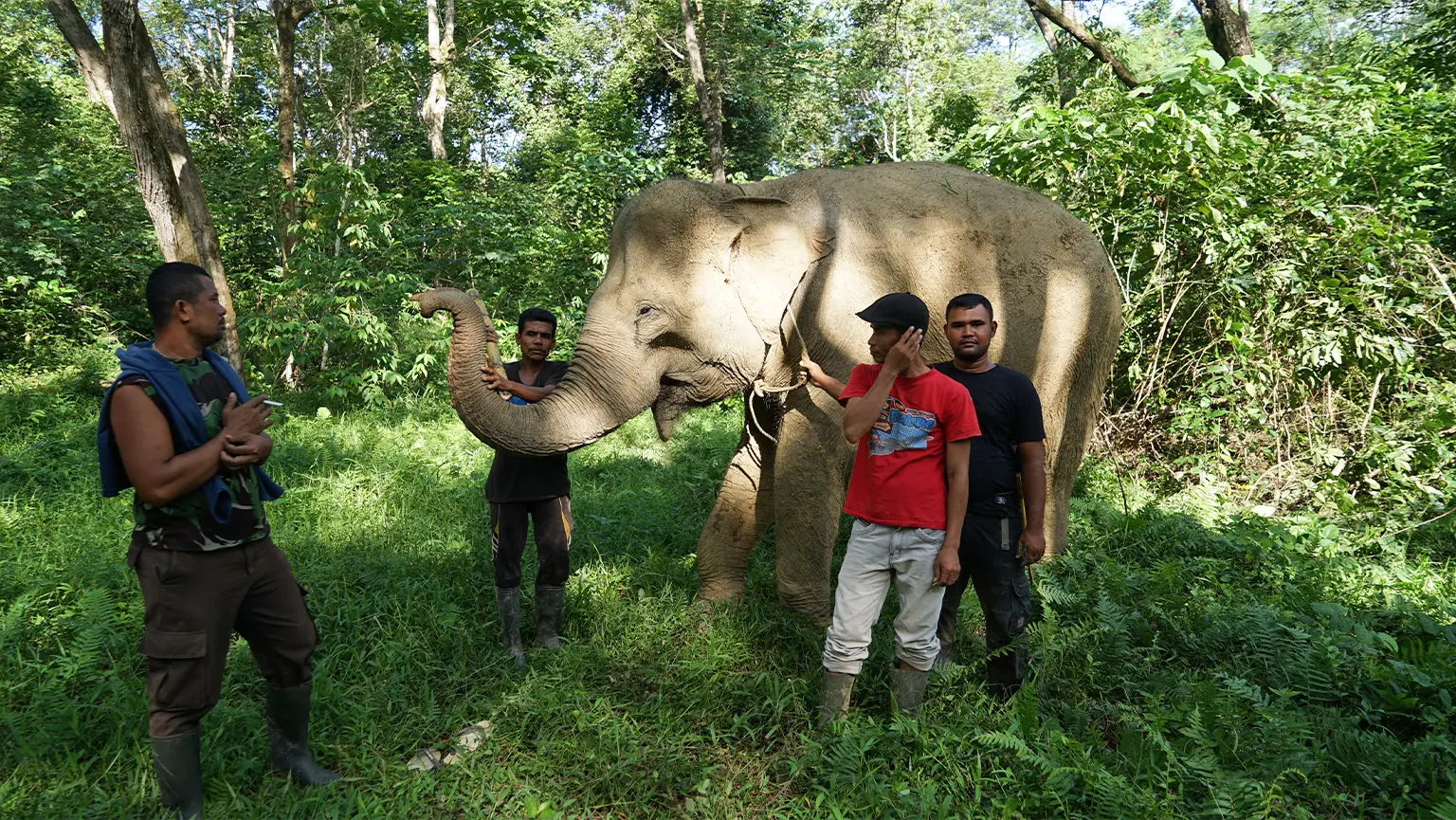
- Villagers living on the forest’s edge in Indonesia often marvel at the intelligence of elephants, even as they struggle to keep the animals from trampling their farms and homes.
- Sumatra has lost around half its rainforest since the turn of the century, driving the forest-dwelling creatures into increasing contact with humans.
- Watch our short film Indonesians on the front lines of human-elephant conflict in northwestern Sumatra.
Electric wire fences set up to keep marauding elephants out of farms and villages in Indonesia’s Aceh province worked well — at least at first.
When the elephants realized the electric current did not extend to the fence posts, they knocked them down, causing the whole barrier to collapse.
Sumatran elephants are “not just clever — they’re very clever,” said Zaikyatuddin Shah, the leader of a government conservation team in Cot Girek, a village in the province, who recounted the anecdote. “We might be modern, but they’ve already thought about how to overcome our modernity.”
The Sumatran elephant (Elephas maximus sumatrensis) is one of three subspecies of Asian elephant, and the only one in the islands Southeast Asia. But the animal is fast disappearing as its forest home is razed to make way for development.
In 2007, Indonesia placed the number of wild Sumatran elephants at 2,400-2,800. A more recent estimate, however, put the population at 924-1,359, a drop of 52-62%.
“I’ve seen [herds of] up to 108 individuals … But those are no more now,” said Wishnu Sukmantoro, deputy head of the Indonesian Elephant Conservation Forum, a group composed of government and NGO conservationists that produced the latter figure. “Now if you get herds of 40 or 50 individuals, that’s considered big.”
The shrinking of their habitat has driven the elephants into often violent encounters with humans, with farmers shooting or poisoning them to keep them away from their homes and crops. Despite the fraught situation, locals have been touched by what they perceive as the animals’ high intelligence.
“I remember seeing an elephant that fell into a canal,” said Junaidi, 42, a farmer who leads a volunteer elephant patrol team in Cot Girek. “One of its mates immediately helped it. They help each other, just like humans.”
Studies show that elephants in general can recognize their own reflection, use sticks to shoo away flies and scratch themselves, and smell the difference between tribes of humans.
While no study has examined the cognition of the Sumatran as opposed to other types of elephant, stories from Aceh strengthen the notion that the local variety is a canny creature.
Elephants have a long cultural history in the province, where an origin myth tells of a prince who was cursed to become an elephant. “That’s why they can think like humans,” Zaikyatuddin said.
Many villagers use loud noises to scare off wild elephants who might wander into their farms, but not Zaikyatuddin.
“I think it’s enough just to tell them to back off,” he said. “By speaking to them nicely, we are not creating hostility.”
Not everyone treats them with such respect, sometimes inviting dire consequences. When villagers recently poisoned a pregnant elephant, the rest of the herd ran amok, uprooting trees and trumpeting loudly.
“They get vengeful, just like people,” Yasmin, 61, a member of the Kelompok Meurah women’s farmer group in Aceh’s Alue Buloh village.
Watch our short film, “Homeless Giants,” about the Indonesians on the front lines of human-elephant conflict in Aceh to learn more about life in the alternately awe-and-terror-inspiring vicinity of some of the world’s largest land mammals. The film was produced by Jakarta-based filmmaker Fieni Aprilia (@Fiensh) and Sumatra-based journalist Dyna Rochmyaningsih (@rochmyaningsih) in partnership with Mongabay’s editorial and video teams, with support from the Pulitzer Center’s Rainforest Journalism Fund.



